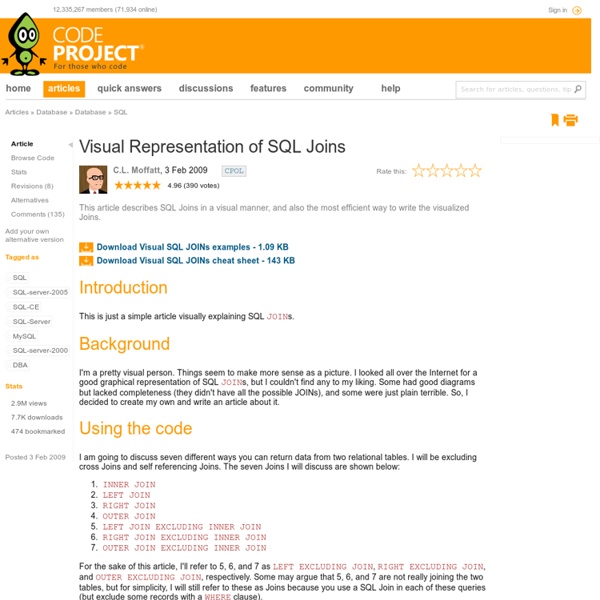Visual Representation of SQL Joins

QuickRef.org - all your docs are belong to us - PHP, Perl, CSS, HTML, Java, JavaScript, MySQL, Ruby, Python, and more
Related:
Related:



